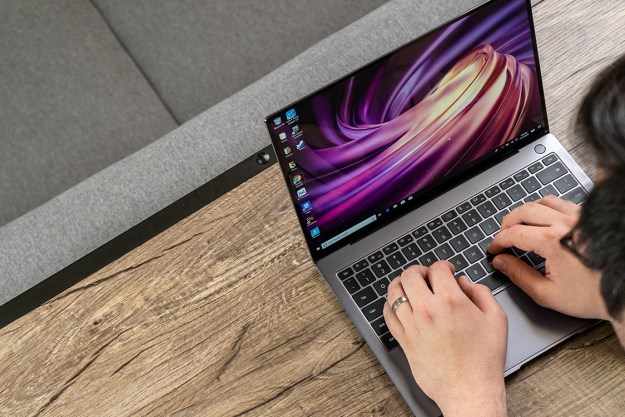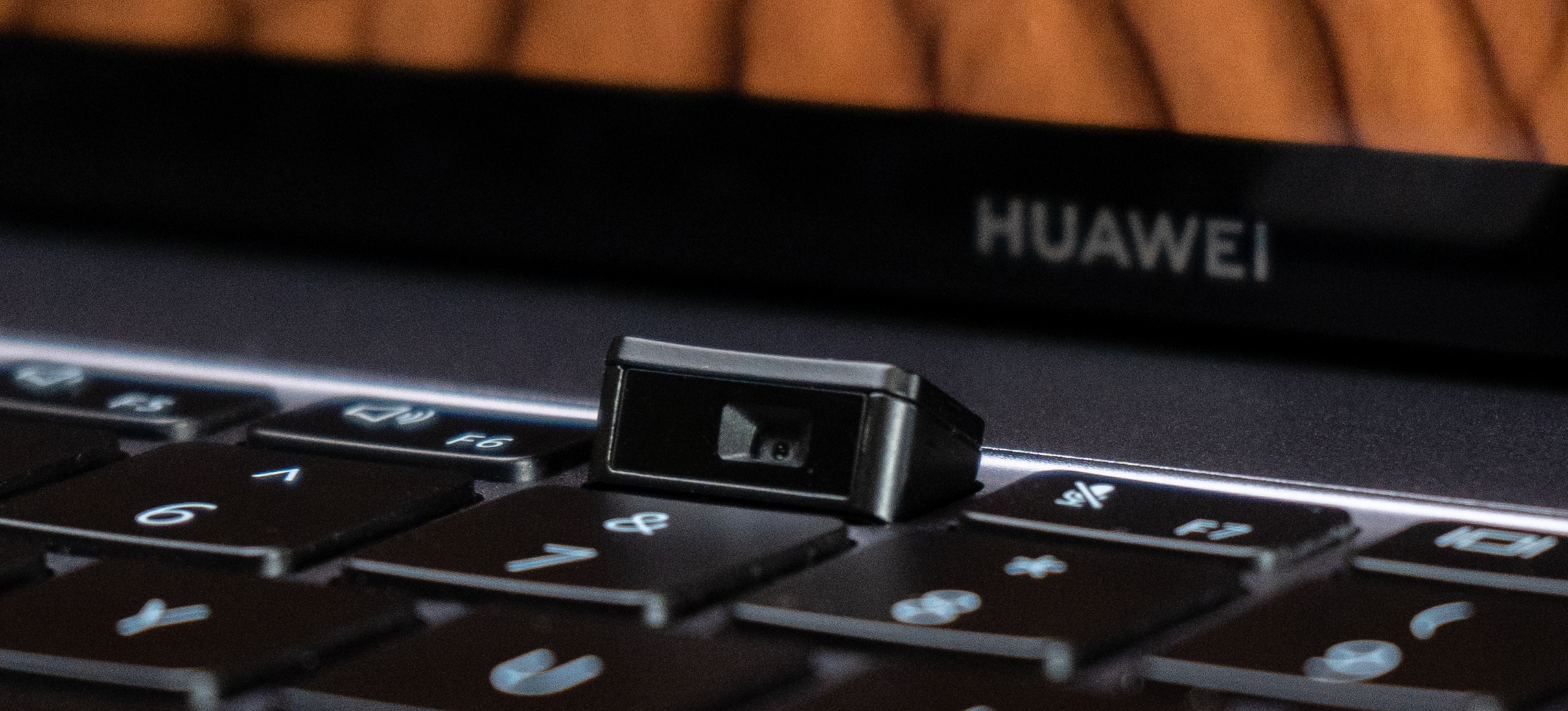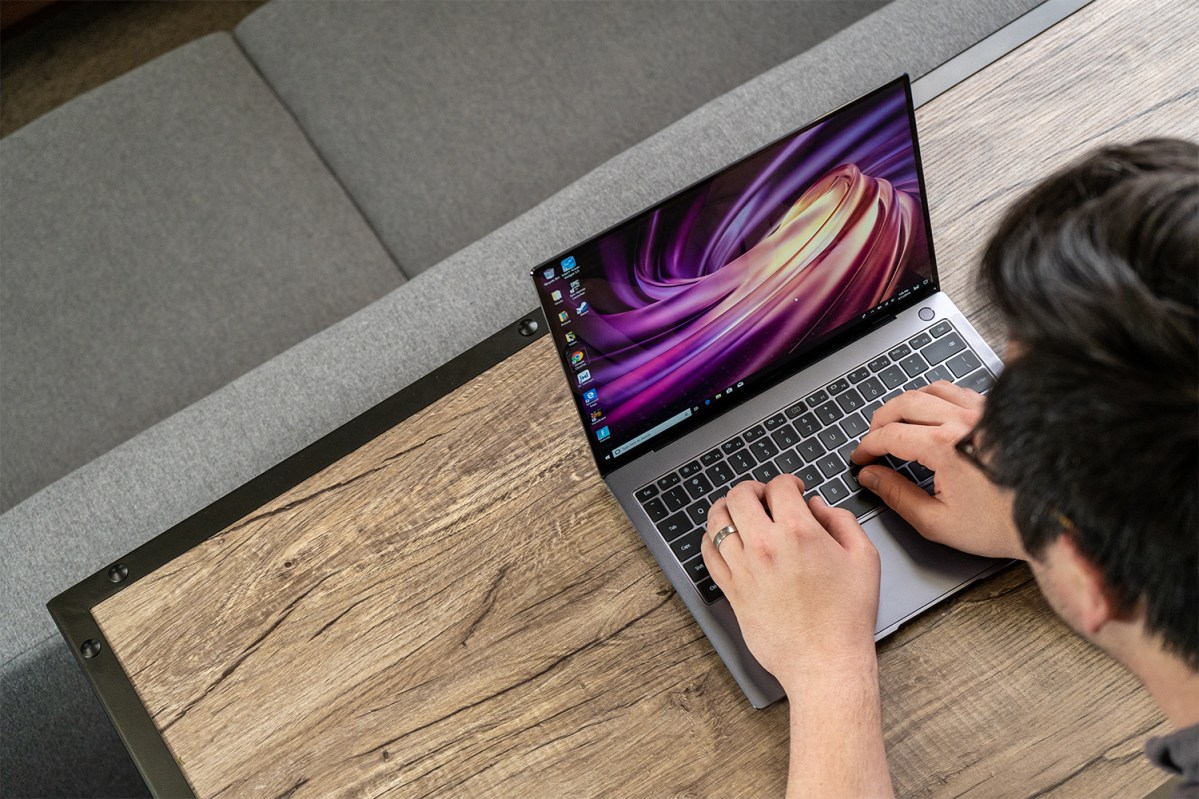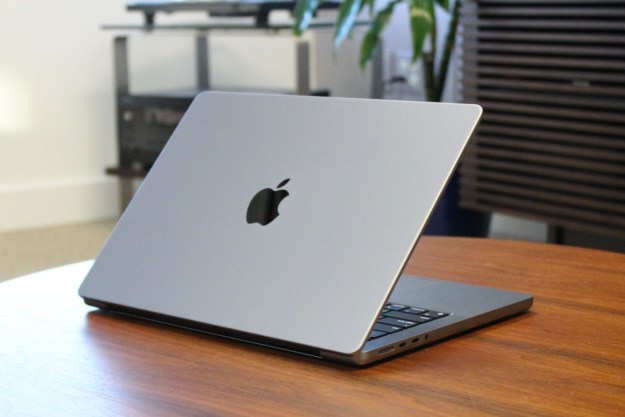
“The MateBook X Pro dominates in nearly every field, but you’ll have to pay for the privilege.”
- Beautiful 3:2 screen
- Thin bezels, small footprint
- Responsive keyboard and touchpad
- Battery life is great
- Rigid build quality
- Hidden camera is still awkward
- MX250 graphics is underwhelming
- Too expensive
Regardless of what you think of the company’s recent political controversies, one thing is for sure: The folks at Huawei make some incredible products. From smartphones to laptops, the company has made a name for itself. Just consider the P30 smartphone, which has a camera so staggeringly good, it defies belief.
The MateBook X Pro is the perfect example of the company’s achievement. Originally launched in 2018, this MacBook Pro competitor showed the company wasn’t afraid to take risks. With an updated MX250 graphics card and new gesture support, the laptop’s 2019 update doesn’t reinvent the wheel. Everything we liked about the 2018 model is back, proving just how solid the original design holds up.
The problem? A price bump over last year’s mode. While Huawei hasn’t confirmed U.S. pricing, the Euro price of our tricked-out review unit converts to about $2,250. Are the upgrades worth the extra scratch?
A touch of class, a hint of elegance
The MateBook X Pro is a beautiful laptop. The dark grey color scheme is minimal without being too boring. The chassis is thin and light without sacrificing port selection or build quality, and even the elements on the keyboard deck feel precise and thought out.
It’s not only about looks. If you’re familiar with the aluminum build quality of the MacBook Pro, you can expect the same rigidity here. Across the board, the MateBook X Pro feels like a highly-refined product, which is an accomplishment for a company as new to laptops as Huawei.
The only real change in exterior design is a new logo on the lid, which is a bit more elegant than what appears on other Huawei laptops. A chamfered edge outlines the chassis, giving the device just a hint of class. It’s not hard to imagine it fitting into a business setting every bit as well as at a coffee shop – right next to a MacBook Pro.
Speaking of the MacBook Pro, the MateBook X Pro compares to it favorably. It shares the same silver chassis, a black chiclet keyboard, and similarly-sized touchpad. What’s different? Well, the most notable difference is the screen. It measures in at 14 inches diagonally compared to 13.3 inches of the MacBook Pro or the Dell XPS 13, but it’s also a 3:2 aspect ratio that provides some additional screen real estate. Sitting next to a MacBook Pro (which uses a 16:10 screen), the MateBook X Pro is a bit taller, but when they’re closed, the footprint on the table is nearly identical. For my money, it’s the ideal size for a laptop screen — if you don’t plan on using it on an airplane, where the taller screen can make tray-top use difficult.
It’s not hard to imagine it fitting into a business setting every bit as well as at a coffee shop.
Speaking of size, the MateBook X Pro certainly isn’t the thinnest or lightest laptop in the world, though it matches the MacBook Pro and Surface Laptop 2. At 2.9 pounds, it’s lighter than its Mac rival, and it’s ever so slightly thinner at 0.57 inches. Smaller laptops like XPS 13 beat them all in portability, of course.
Port selection on the MateBook X Pro hasn’t changed from last year’s model. You still get a Thunderbolt 3 / USB-C and USB-C port on the left side, as well as a USB-A 3.0 port on the right. This is a nice balance of the old and the new, though I do wish Huawei had split up the USB-C ports so that charging from either side was possible. Creatives might also lament the lack of an SD card reader. The XPS 13 includes a mini-SD card slot, while the Asus ZenBook UX333 includes both a mini-SD card slot and an HDMI port.
A fantastic keyboard, except for one key
The MateBook X Pro has an excellent set of inputs. The keystrokes aren’t long, but they feel snappy and responsive. The layout is spacious and familiar, keeping things right where you’d expect them to be. I picked up the MateBook X Pro and began comfortably typing away with confidence without a hitch.

That is, except for the webcam key, located right in between F6 and F7. In 2018, the placement of the webcam beneath this key was cute. In 2019, it feels a bit more like a misstep. With the XPS 13 moving to a smaller webcam placed above the screen and the Asus ZenBook S13 using a slight bump to fit in, Huawei’s solution seems the least elegant. Yes, the bezels are razor-thin, but they come to the detriment of the webcam placement. As we’ve always said with these nose-cam situations, it won’t matter for people who rarely use a webcam. For frequent video callers, it’s a dealbreaker.
The bezels are razor-thin, but they come to the detriment of the webcam placement.
The island-style touchpad is large, outlined by chamfered edges. The extra size over laptops like the XPS 13 or Surface Laptop 2 means you have plenty of space for tracking and multi-touch gestures. The glass surface feels incredibly smooth and responsive, a significant improvement over the MateBook 13. Thanks to the Windows Precision drivers, two-finger scroll and three-finger swipes all respond quickly. It ranks among the very best touchpads you’ll find on a Windows 10 laptop.
The fingerprint reader is built into the power button, which is right where we like it. Using Windows Hello, it reads fingerprints accurately and makes signing into Windows 10 fast effortless.
Extra space to scroll
The glossy screen is where the MateBook X Pro flexes. It’s glorious. The extra horizontal space provided by the 3:2 aspect ratio is a boon to productivity. Whether it’s websites or documents, you can see more of everything you’re working on. Beyond just size, the MateBook X Pro is also extremely sharp. At 3,000 × 2,000 pixels, it’s just short of 4K but ahead of the Retina display on the MacBook Pro and every 16:9 1080p screen out there. The Surface Laptop 2 and Pixel Slate tie it in sharpness, but the MateBook X Pro has the image quality to back it up.
This is as bright as laptop screens get. We measured it at a max of 540 nits, which again, ties the MacBook Pro and destroys laptops like the XPS 13. You won’t have a problem seeing past your reflection in the glossy screen. It also logs impressive readings in contrast and color accuracy, where it’s again at front of the pack.
The only place where the MacBook Pro beats it is in color gamut. Apple’s screens still win here with a 94 percent of the AdobeRGB color scale compared to the more average 74% of the MateBook X Pro. Even still, with color accuracy as solid as it is, you should haven’t a problem trusting the screen while editing photos or video.
The speakers are located right on the keyboard deck, which is where we like to see them. They’re Dolby Atmos enabled, and a decent set of speakers. There’s still a lack of bass in the sound, and at higher volumes you’ll start to hear crackles. But compared to most laptops, the MateBook X Pro is pleasant.
Four cores on one fan
The MateBook X Pro comes with the Core i7-8565U processor, a quad-core processor that’s common in premium, thin-and-light laptops. Our unit also came with 16GB of RAM and a 512GB SSD. All of that adds up to a quick laptop with plenty of productivity performance.
Geekbench results aren’t showing us anything out of the ordinary, both in terms of single-core and multi-core performance. We also test our laptops in a real-world scenario: 4K video encoding. In Handbrake, we encoded a two-minute movie trailer to the H.265 video codec in five minutes. Surprisingly, that’s a bit slower than the smaller MateBook 13. The reason? The cooling.
The MateBook X Pro handles the four cores quite well, but it uses just a single fan for cooling, unlike the two fans that the MateBook 13 or XPS 13 use. That single fan doesn’t throttle the performance too much, but we did notice it would kick in a bit prematurely from time to time. Compared to other laptops, it’s having to work double-time.

While the MateBook X Pro holds up well in general productivity performance, it’s by no means the ultimate content creation tool. Compared to 15-inch laptops like the Dell XPS 15 or HP Spectre x360 15, with their six-core processors and more powerful graphics cards, the MateBook X Pro can’t hold its weight. Photographers can get by, but if you’re editing video, those 15-inch laptops will serve your needs better.
Fortunately, the MateBook X Pro includes some really high-speed storage. The Samsung M.2 NVMe SSD is fast in both read and write speeds, earning read speeds of up to 2,127 MB/s and write speeds of up to 1,292 MB/s. While RAM is soldered on (and therefore non-upgradable), the SSD can be swapped out in the future.
The MX250 disappoints
When Huawei first announced the mysterious MX250 graphics chip in the new MateBook X Pro, we were excited about the potential. The MX150 is a solid step up from integrated Intel graphics, but at this point it’s outdated. As one of the only laptops with the new MX250, this could’ve been its killer feature. Instead, the results explain why no one else is using this chip.
Let’s start with the 3DMark Time Spy benchmark. Right away, we can see how the MX250 stacks up to two direct alternatives; the 10-watt MX150 (2GB) and the 25-watt MX150 (4GB). The former is the version used in the original Huawei MateBook X Pro, and it underperformed compared to other systems with the same GPU. The higher-wattage option has recently been used in devices such as the Razer Blade Stealth (2019) and the Huawei MateBook 13. To seal the deal, even the recent MateBook 13, which uses the 10-watt MX150, beats the new MX250 in Time Spy. That’s not what you want in a next-generation chip.
In games, it’s a similar story. We tried the MateBook X Pro out in two games: Civilization VI and Fortnite. You can get by at 1080p if you settle for low graphics settings. In Civilization, you’ll need to bottom it out at Low to get close to 30 FPS. Anything above that results in a choppy mess. Fortnite plays a bit smoother, hitting 35 FPS on High at 1080p. If you’re more of a casual gamer, the MateBook X Pro provides workable framerates, but it’s not going to satisfy anyone who games more than once every few weeks.
Overall, the MX250 lands somewhere between the 10-watt MX150 and the 25-watt MX150. With only 2GB of memory, it’s no surprise it’s limited in what it can do.
All-day battery life, and then some
The MateBook X Pro served up excellent battery life when we tested it last year, which was a pleasant surprise given the large, high-resolution screen. We were curious how the new Nvidia MX250 might change battery life, since we’ve seen some mediocre results from laptops with the 25-watt MX150, such as the MateBook 13. We were happy to see the new MateBook X Pro not only keeps up with the great battery life but improves on it.
A solid 10 hours in web browsing is excellent. That’s a half hour over last year’s model. More importantly, that means a full day of work on a single charge shouldn’t be a problem – impressive, given the display. We’ve tested 1080p laptops such, as the Dell XPS 13 and HP Spectre x360, that last longer, but most models are on par or behind the Huawei.
A full day of work on a single charge shouldn’t be a problem for the MateBook X Pro.
We saw the same increase in our video loop test, which runs local 1080p video until the battery dies. The MateBook X Pro lasted just under 11 hours. Our most intensive test, a web-based CPU benchmark called Basemark, killed it just three hours, which is a bit lower than some other competitors. This, however, represents the least amount of battery life you can expect from the laptop. We found ourselves hitting around 10 ten hours in our standard workflow.
Three finger screenshots
We don’t normally spend a lot of time talking about software on Windows 10 devices. They’re all typically the same. However, Huawei has included a couple software tweaks this time around.
New to the MateBook X Pro in 2019 is a new way of taking screenshots. You’ll activate a screenshot mode with a three-finger swipe down from the top of the screen. From there, you can draw the area you want to select to capture or select a window separately. Using the touchscreen for screenshots is a neat idea, but Huawei’s implementation feels clunky. Gestures often trigger Microsoft’s own Windows touch gestures.

The second feature is Huawei Share, a way to make smartphones interact more with PCs. It’s a problem we’re seeing a lot of companies attempt to solve, whether it’s Dell or Microsoft. But unfortunately, Huawei Share only works with Huawei smartphones – which aren’t exactly popular in the U.S.
You will find some bloatware here. Most of it is just Windows stuff, but our system came loaded with over 40 GB of applications preinstalled. That’s not ideal, and disappointing to see on a premium laptop.
Our Take
The 2019 additions to the MateBook X Pro aren’t much to be excited about. The software features are awkward and the MX250 GPU isn’t much of an upgrade. However, they don’t take away from the appeal of the original model, which is still a stand-out laptop in many ways.
There’s a big problem, however. Price. We currently only have access to the European prices, which are hovering around $2,250. Last year’s model ended selling for less in the US, but that’s still around a 20 percent increase in price. Meanwhile, the price of the 2018 model continues to drop. Buying the new model doesn’t make a lot of sense right now.
Are there any alternatives?
The MateBook X Pro looks a lot like the 13-inch MacBook Pro, but we prefer Huawei’s in most ways. The keyboard is more reliable, the discrete GPU is a good addition, the ports are more convenient, and it’s cheaper.
Another strong contenders is the Surface Laptop 2, which features a similar 3:2 aspect ratio touchscreen and a stellar design. We haven’t tested the battery life and performance yet on that machine, but the laptop’s unfortunate port situation makes it a bit harder to recommend.
Lastly, we have to mention the Dell XPS 13, which is currently the best laptop. It’s solution to keeping bezels slim is more practical than Huawei’s, and it features some of the best battery life, performance, and build quality you can get in a laptop. It’s quite a bit smaller than the 14-inch 3:2 screen of the MateBook X Pro, however.
How long will it last?
The MateBook X Pro should last you three to five years, if not longer. It’s a modern laptop in every way, including the port selection and components. Huawei provides a standard one-year warranty, though it’s nothing out of the norm for what manufacturers offer.
Should you buy it?
Not the 2019 version. While we like the laptop, the big leap in price isn’t justified by middling upgrades over last year’s model. For now, the 2018 edition remains a great value.
Editors' Recommendations
- The XPS 16 is fighting an uphill battle against the MacBook Pro
- The best MacBook to buy in 2024
- Best MacBook deals: Get an Air for $605 and save on M3 MacBook Pro
- The MacBook Air 15 vs. MacBook Pro 14: the easy way to decide
- Why one of my favorite laptops still struggles against the MacBook Pro






